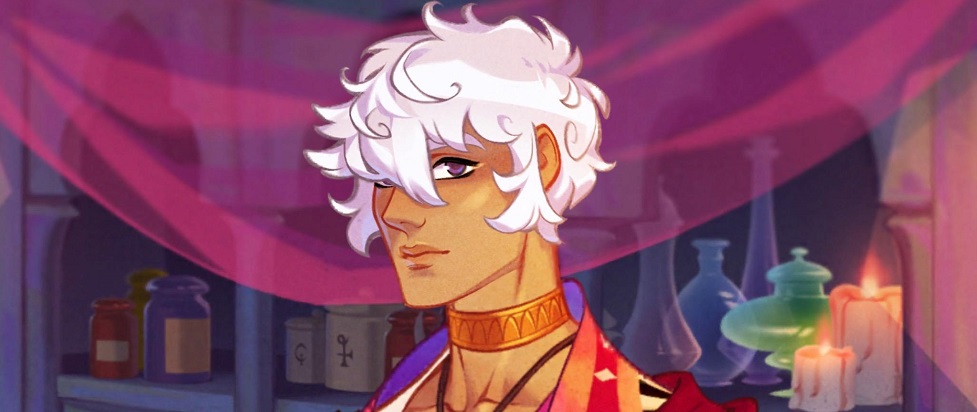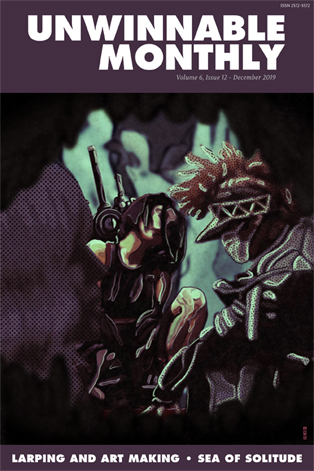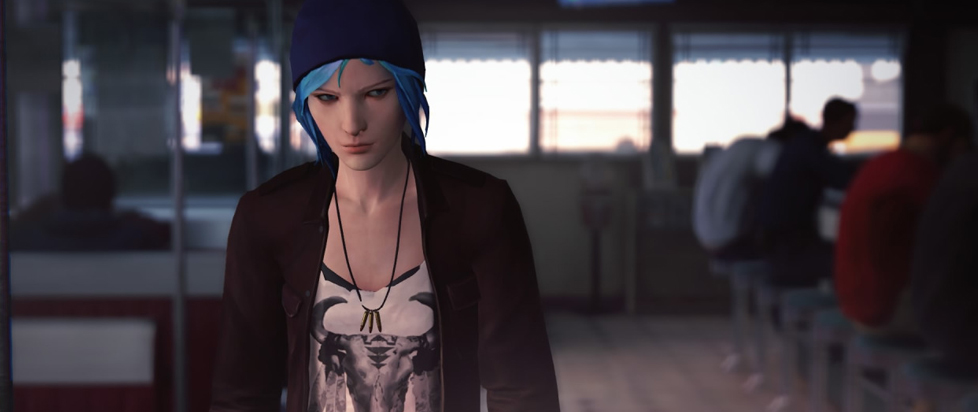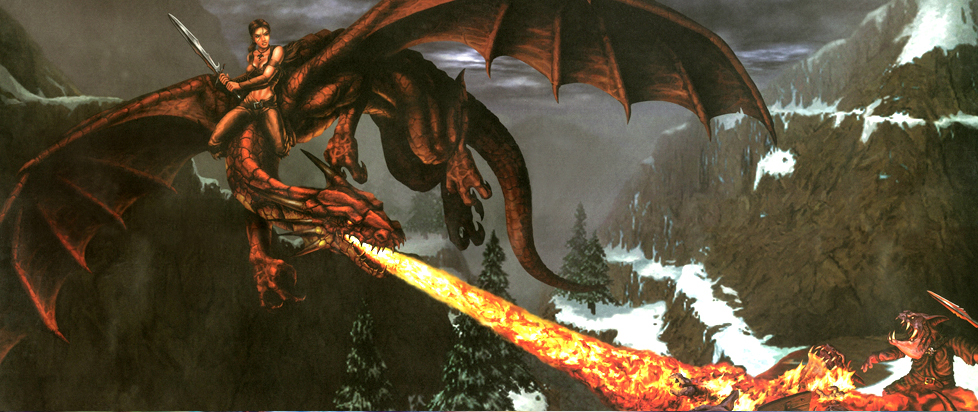
Asra from The Arcana

This column is a reprint from Unwinnable Monthly #122. If you like what you see, grab the magazine for less than ten dollars, or subscribe and get all future magazines for half price.
———
Fictional companions and goth concerns.
———
In 2014, a friend read my tarot and I started to cry. The reading wasn’t dark, it was just too goddamn real. The next year, I began learning the cards myself. I’m far from mastering the practice, but it is a practice I’ve found soothing and useful on many occasions. I often think of tarot as “forced introspection” or “forced intuition”: whatever comes to mind when you’re interpreting the cards (or having them interpreted for you), that’s what you’re really thinking about. If a tarot reader tells you there’s a dark presence in your life and you immediately think, “It’s fucking Colin at the office,” you should trust yourself. Your subconscious is telling you something. The cards are luring it out.
Nix Hydra’s mobile visual novel, The Arcana, is inspired by the tarot and references a vast array of mystical and spiritual concepts: astral projection, sacred geometry, auras, herbalism. You play an apprentice magician, entering the game as your attractive mentor, Asra, departs on a mysterious journey.
Asra, a master magician, knows a lot about the tarot. Fictional magicians in fantastical kingdoms are familiar; fictional magicians whose esoteric knowledge mirrors Earthly knowledge are less common.
Some tarot basics: decks are divided into the Minor Arcana (four suits of pentacles, wands, swords and cups) and the Major Arcana, featuring archetypal figures and concepts. These Major Arcana include the cards beloved by horror movies: The Devil, The Hanged Man, Death. As a tarot enthusiast and horror movie fan, it’s always enjoyable – and often quite funny – to see the cards interpreted in pop culture. “Death” tends to be literal, as does “The Devil.” And why not? The archetypal images are powerful, and the popular 1910 Rider-Waite-Smith deck’s images look beautifully dramatic blown up on the big screen.

All of this is to say that I wasn’t necessarily expecting non-literal tarot interpretations from The Arcana.
I should have trusted in Asra.
When Asra draws the Devil card, he says “A trap that I’ve let myself fall into . . . a bond I refuse to escape.”
In one of my favorite books on the tarot, Seventy-Eight Degrees of Wisdom, author Rachel Pollack describes one of the Devil’s divinatory meanings as “any form of misery or depression, especially feeling chained or imprisoned, with the illusion that no alternatives are possible.” “Bondage to the material,” as Eden Gray writes in Mastering the Tarot.
This brings us back to the actual story of The Arcana (light spoilers ahead). A villainous nobleman, Count Lucio, has been transformed into a spectral devil-goat the spitting image of the Devil in Asra’s tarot deck.
And to be fair to a lot of horror movies out there, The Devil can be interpreted more literally, as in evil or black magic. In my experience (knock wood), it just usually . . . isn’t. In The Arcana, the interpretation is both literal and metaphorical: Count Lucio turned into an actual Devil. Asra is dealing with bonds he refuses to escape. It’s a twofer.
Then, when the Death card appears in the same reading, Asra says, “Death is transformation. It would have been the Count’s favorite, if he understood it.”
This also applies perfectly both to the plotline and to the card’s traditional interpretation. The Death card is “Renewal, transformation” (Eden Gray); “Transformation, change and new beginnings” (Liz Dean, Tarot Made Simple); “The transformation of energy from one shape or form into another” (Mary K. Greer, Tarot for Your Self).
In Seventy-Eight Degrees of Wisdom, Rachel Pollack takes this idea further. “Contrary to what many people believe the card of Death does not actually refer to transformation,” Pollack writes. “Rather, it shows us the precise moment at which we give up the old masks and allow the transformation to take place.” This is quite appropriate for Count Lucio, as he shed his human form and became trapped, as a devil-goat, in the incorporeal realm.
Of course, one can’t focus too heavily on individual tarot card interpretations in a fantasy/romance visual novel. You have characters to romance, devils to pursue and happy endings to unlock. You have extremely cute mini-games to complete. You have a replica of Asra’s tarot deck to seriously consider purchasing. If you want to obsessively ponder the meaning of fictional characters’ tarot cards, well . . . that’s the kind of thing this column is for.
———
Deirdre Coyle is a goth living in Brooklyn. Find her at deirdrecoyle.com or on Twitter @deirdrekoala.




